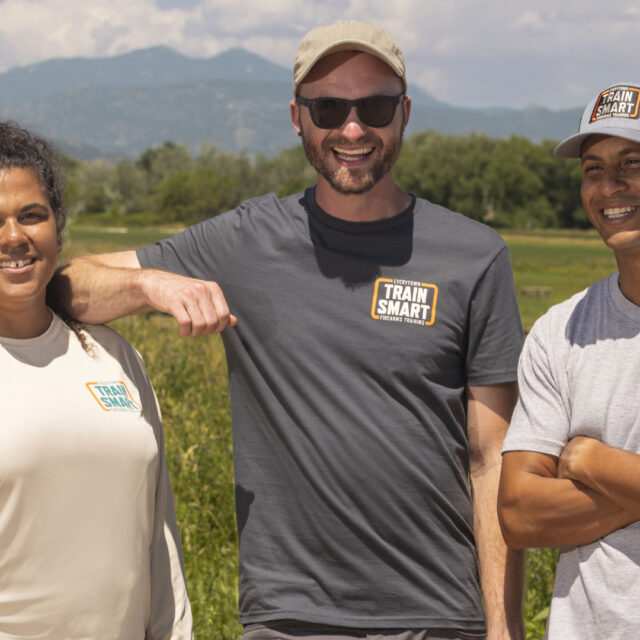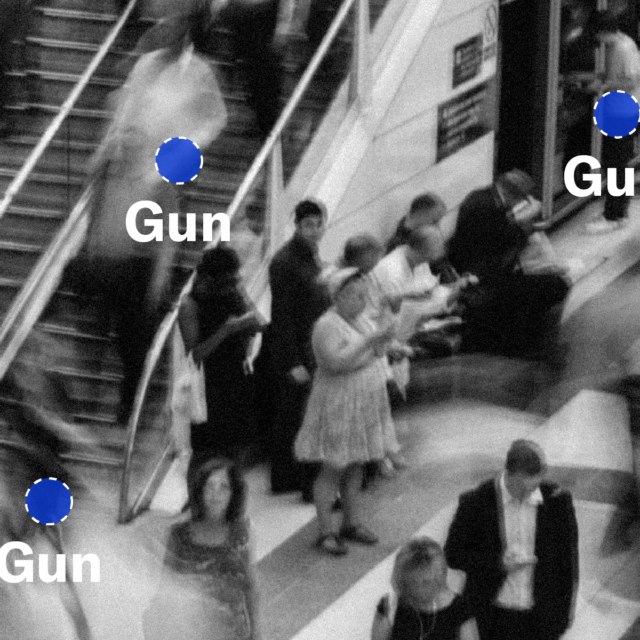Funding Summer Youth Programming Prevents Gun Violence
Last Updated: 5.20.2024
Introduction
“Preventing gun violence in cities like Chicago is most important to me because it deeply affects young people, especially in Black and Latinx communities. Local investments in summer youth programs are critical to creating opportunities for young people to stay safe, earn needed income, and build leadership skills that will benefit them and their communities in the years to come.
As a leader of the Students Demand Action Summer Leadership Academy in Chicago, I know the importance of empowering students to organize their peers and create opportunities that would have not otherwise been available to them.
Founded in Summer 2019, the Students Demand Action Summer Leadership Academy enables communities disproportionately impacted by gun violence to host summer programs which empower low-income students, survivors, and people of color to become community organizers. The initiative prioritizes removing barriers (meals, mentoring, transportation costs, etc.) that keep marginalized student leaders from becoming leaders in the gun violence prevention movement. In its first two years, the Academy reached 45 students in Los Angeles, California and Nashville, Tennessee, and in 2021 continued the program in Los Angeles and Nashville, as well as expanding to Detroit, Michigan, Chicago, Illinois, and Tampa, Florida, reaching 55 students across these cities In 2022 we are continuing our work in Tampa, Florida, Chicago, Illinois, and Los Angeles, California, and expanding our programs to include Memphis, Tennessee, Phoenix, Arizona, and Washington, D.C.
With the rise in gun violence across the country, I hope that cities will make it a priority to reinvest and expand summer programming for youth.”
—Ade Osadalor
Undergraduate Student, University of Chicago; National Advisory Board Member, Students Demand Action; Leader, Chicago Students Demand Action Summer Leadership Academy.
Investing in young people should be a priority for cities as we continue on the path to COVID-19 recovery. Summer youth development and employment programs provide young people with educational and mentorship opportunities, prepare them for the workforce, add income to their homes, and are proven to reduce violence.
For the past two years, cities across that country have been grappling with the uncertainty, loss of life, shared and individual trauma, and economic toll of two public health crises: COVID-19 and gun violence. These dual crises have had a disproportionate impact on Black and Latinx communities who are impacted by persistent racial inequities, low financial investment, and under-resourced public health and community-led public safety programs.
At the height of the pandemic in 2020, as cities adapted to the public health and fiscal realities of COVID-19, many cities chose to pause or scale back programming that directly benefited Black and Latinx communities. Among the impacted programs were summer youth engagement and employment initiatives. These programs are especially important because they not only provide economic opportunities for young people and their families, but they are also a demonstrated means of reducing gun violence.
Fortunately, the economic landscape for cities in 2021 looks much different from the landscape in 2020. Cities are developing protocols to safely reopen, and $130 billion in federal relief via American Rescue Plan funding is en route to cities to help local officials counter the economic impact of COVID-19. The Department of Education will be granting an additional $122 billion to states to resource local educational agencies and support youth education, services, and activities.1Public Law No: 117-2, Sec. 2001. The Department of Treasury2Department of the Treasury, 31 CFR Part 35 RIN 1505-AX77, Coronavirus State and Local Fiscal Recovery Funds, Final Rule,” 87 Fed. Reg. 4338 (January 27, 2022), https://federalregister.gov/d/2022-00292. and Department of Education released guidance authorizing these funding streams to be used for summer youth programming and community violence intervention programs more broadly.3US Department Education, “How American Rescue Plan Funds Can Prevent and Respond to Crime and Promote Public Safety,” June 2021, https://oese.ed.gov/files/2021/06/21-0130-ARP-Public-Safety-ED-FAQ-06-16-2021.pdf
President Biden further bolstered potential funding for summer youth programming by issuing an executive order directing five federal agencies—including the Department of Education and Department of Labor—to adjust existing grant programs to ensure community-based violence intervention programs, including summer youth employment and engagement programs, are explicitly eligible to apply for funding.
In 2022, as states and localities continue to receive and disburse American Rescue Plan funding and apply for federal grant programs, state and local officials should continue to prioritize funding to gun violence intervention programs, including youth engagement and employment initiatives.
In 2021, cities took action to prioritize funding for summer youth programming in 2021:
- New York City’s Summer Youth Employment Program (SYEP), the nation’s largest youth employment program, returned in 2021 after the program was scaled back and conducted virtually in 2020.4City of New York Office of the Mayor, “A Recovery for All of Us: Mayor de Blasio Announces Applications are Open for the 2021 Summer Youth Employment Program,” press release, March 22, 2021, https://on.nyc.gov/3y0KoSg. SYEP 2021 served 70,000 young people, providing them with paid work experience, work readiness training, and leadership skills.5City of New York Office of the Mayor, “A Recovery for All of Us.”
- Columbus, Ohio, announced increased investments in 2021 summer youth programs with the specific purpose of reducing gun violence following canceled programs and limited opportunities for youth engagement in the summer of 2020.6Eric Lagatta, “Ginther Unveils Slate of Youth Summer Programs Aimed at Reducing Violence in Columbus,” Columbus Dispatch, May 7, 2021, https://bit.ly/3o4gTdr. The 2021 programs announced by the city included seasonal employment opportunities, work readiness training, and evening community events.7Eric Lagatta, “Ginther Unveils Slate of Youth Summer Programs.”
- Washington, DC expanded summer youth employment program provided opportunities for 13,000 youth, up from 10,000 youth in previous years, and DC-area school systems dedicated American Rescue Plan funds to summer education programs.8Tanaz Meghjani, “DC Voices: Summer 2021 programming to address learning loss and student well-being,” (DC Policy Center, May 5, 2021), https://www.dcpolicycenter.org/publications/summer-2021-programming/.
2022 Investments in Summer Youth Engagement and Employment Programs
This year, cities have already begun announcing increased investments in summer youth and engagement programming:
- New York City announced its largest Summer Youth Employment (SYEP) program in history with an investment of $236 million to create 100,000 jobs as a part of the city’s Summer Youth Employment Program.9City of New York Office of the Mayor, “New York City Mayor Eric Adams Announces Record 100,000 Summer Youth Employment Opportunities,” press release, February 15, 2022, https://on.nyc.gov/3KzFXTE; City of New York Office of the Mayor, “Summer Youth Employment Program Applications Open for New Yorkers Aged 14–24,” press release, March 1, 2022, https://on.nyc.gov/3MBh3VP.
- The State of California has allocated $185 million in state and federal funding to the All Youth Jobs Corps program which will issue grants in two phases. Phase one will award $150 million in funding to the 13 largest cities in the state, and phase two will create a competitive grant process with the remaining $35 million for smaller cities and jurisdictions. Los Angeles County will be awarded $53 million to support local youth employment programs.10Jonah Valdez, “Los Angeles to Receive $53 Million as Part of California’s New Youth Jobs Program,” Los Angeles Times, January 28, 2022, https://lat.ms/3Cyp1u1.
- New Haven is allocating $10 million to youth engagement and wealth development.11Brian Zahn, “New Haven to Bolster Housing Youth Engagement, More with $53 Million in Federal Funds,” New Haven Register, January 12, 2022, https://bit.ly/3tPcHSj The first round of American Rescue funds allowed the city to run a full summer youth employment program and these additional funds will help sustain the progress made.
As cities develop their spending plan for American Rescue Plan funds and other federal and state funding, they should prioritize and plan funding for summer youth engagement and employment programs. Additional information about the importance of summer youth engagement and employment programs to counter gun violence is below. For more information on how to use American Rescue Plan funds to address gun violence in your locality, please contact us at [email protected].
Why is summer programming for youth important?
Violent crime tends to increase in the summer.
Crime trends show that cities often experience increases in violent crime during the warm days of summer.12Samuel J. Michel, et al., “Investigating the Relationship Between Weather and Violence in Baltimore, Maryland, USA,” Injury 47, no. 1, (2016): 272-276, https://doi.org/10.1016/j.injury.2015.07.006; Leah H. Schinasi and Ghassan B. Hamra, “A Time Series Analysis of Associations between Daily Temperature and Crime Events in Philadelphia, Pennsylvania,” Journal of Urban Health 94, no. 6, (2017): 892-900, https://doi.org/10.1007/s11524-017-0181-y; Giffords Law Center to Prevent Gun Violence, “Shootings, Cities, and the Summer,” June 2019, https://bit.ly/2TOatS5. For example, from 2017 to 2021, 38 percent of gun homicides and non-fatal shootings in Baltimore occurred between May 1 and August 31..13“Part 1 Crime Data,” Baltimore City Open Data, accessed March 10, 2022, https://data.baltimorecity.gov/datasets/part1-crime-data/explore.. From 2017 to 2021, there were an average of 1,015 gun homicides and non-fatal shootings each year in Baltimore, 388 of which occurred between May 1 and August 31.
Youth are at high-risk for becoming victims and participants of gun violence.
American youth ages 15 to 24 are 23 times more likely to be killed with guns than those in other high-income countries.14Erin Grinshteyn and David Hemenway, “Violent Death Rates in the US Compared to Those of the Other High-Income Countries, 2015,” Preventive Medicine 123 (2019): 20–26, https://doi.org/10.1016/j.ypmed.2019.02.026. In an average year, nearly 37,000 15- to 24-year-olds are shot and killed or wounded in the US—61 percent of these deaths are by gun homicide, and 46 percent of these injuries are by gun assault.15On average, 8,758 15- to 24-year-olds are shot and killed and 28,061 are shot and wounded in the US every year. Centers for Disease Control and Prevention, National Center for Health Statistics. WONDER Online Database, Underlying Cause of Death. Everytown for Gun Safety Support Fund, “A More Complete Picture: The Contours of Gun Injury in the United States,” December 4, 2020, https://everytownresearch.org/report/nonfatals-in-the-us/. A yearly average was developed using the most recent available data: 2018 to 2022 for gun deaths and 2016 to 2018 for gun injuries. Homicide and gun assault includes shootings by police.
Violence in cities is often cyclical and the trauma that comes with it can lead youth to engage in violence. The same youth who are victimized by violence are often also perpetrators. In cities during 2019, youth under 25 made up 42 percent of arrests for murder and nonnegligent manslaughter, 52 percent of arrests for robbery, 27 percent of arrests for aggravated assault, and 39 percent of arrests for weapons offenses.16Federal Bureau of Investigation, “Crime in the United States, 2019,” table 47, (2020), https://bit.ly/2Pt1Qxf. Weapons offenses include “the violation of laws or ordinances prohibiting the manufacture, sale, purchase, transportation, possession, concealment, or use of firearms, cutting instruments, explosives, incendiary devices, or other deadly weapons.” https://bit.ly/2MdzQZf.
Gun violence is costly.
Gun violence costs the US $557 billion each year, of which $12.6 billion is paid by taxpayers. While costs vary depending on the circumstances of the incident, each gun fatality costs taxpayers an average of $273,904 for the initial and long-term repercussions of that incident, and each nonfatal injury costs $25,150.17Everytown For Gun Safety Support Fund, “The Economic Cost of Gun Violence,” July 2022, https://everytownresearch.org/report/the-economic-cost-of-gun-violence/. As local governments seek to close budget shortfalls due to the COVID-19 pandemic, investment in gun violence prevention programming can save lives and money.
Youth development and employment programs are proven to reduce violence.
Summer youth employment programs in Boston, New York City, and Chicago have demonstrated that they not only boost employment, but also have longer-term impacts on crime. An evaluation of the Boston Summer Youth Employment Program found that relative to a control group, participants’ violent crime arraignments reduced by 35 percent in the 17 months after program completion.18Alicia Sasser Modestino, “How Do Summer Youth Employment Programs Improve Criminal Justice Outcomes, and for Whom?” Journal of Policy Analysis and Management 38, no. 3 (2019): 600-628, https://doi.org/10.1002/pam.22138. A study of New York City’s program showed it reduces participants’ probability of incarceration by 10 percent (54 percent for those aged 19+), and reduces mortality by 20 percent at least four years post-program completion, relative to baseline.19Alexander Gelber, Adam Isen, and Judd B Kessler, “The Effects of Youth Employment: Evidence from New York City Summer Youth Employment Program Lotteries,” Working Paper, Working Paper Series (National Bureau of Economic Research, December 2014), https://doi.org/10.3386/w20810. In Chicago, assignment to a summer jobs program decreased violent crime arrests among participants by 43 percent in the 16 months following program completion, compared to the control group.20Sara B. Heller, “Summer Jobs Reduce Violence Among Disadvantaged Youth,” Science 346, no. 6214 (2014): 1219-1223, https://doi.org/10.1126/science.1257809.
Learn More:
Everytown Research & Policy is a program of Everytown for Gun Safety Support Fund, an independent, non-partisan organization dedicated to understanding and reducing gun violence. Everytown Research & Policy works to do so by conducting methodologically rigorous research, supporting evidence-based policies, and communicating this knowledge to the American public.




